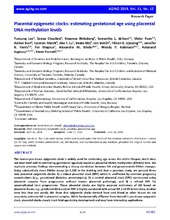| dc.contributor.author | Lee, Yunsung | en_US |
| dc.contributor.author | Choufani, Sanaa | en_US |
| dc.contributor.author | Weksberg, Rosanna | en_US |
| dc.contributor.author | Wilson, Samantha L. | en_US |
| dc.contributor.author | Yuan, Victor | en_US |
| dc.contributor.author | Burt, Amber | en_US |
| dc.contributor.author | Marsit, Carmen | en_US |
| dc.contributor.author | Lu, Ake T. | en_US |
| dc.contributor.author | Ritz, Beate | en_US |
| dc.contributor.author | Bohlin, Jon | en_US |
| dc.contributor.author | Gjessing, Håkon K. | en_US |
| dc.contributor.author | Harris, Jennifer Ruth | en_US |
| dc.contributor.author | Magnus, Per | en_US |
| dc.contributor.author | Binder, Alexandra M. | en_US |
| dc.contributor.author | Robinson, Wendy P. | en_US |
| dc.contributor.author | Jugessur, Astanand | en_US |
| dc.contributor.author | Horvath, Steve | en_US |
| dc.date.accessioned | 2019-12-17T12:48:35Z | |
| dc.date.available | 2019-12-17T12:48:35Z | |
| dc.date.issued | 2019 | |
| dc.Published | Lee Y, Choufani, Weksberg, Wilson, Yuan, Burt AA, Marsit CJ, Lu, Ritz B, Bohlin J, Gjessing HK, Harris J, Magnus P, Binder, Robinson W, Jugessur A, Horvath S. Placental epigenetic clocks: estimating gestational age using placental DNA methylation levels. Aging. 2019;11(12):4238-4253 | eng |
| dc.identifier.issn | 1945-4589 | |
| dc.identifier.uri | https://hdl.handle.net/1956/21160 | |
| dc.description.abstract | The human pan-tissue epigenetic clock is widely used for estimating age across the entire lifespan, but it does not lend itself well to estimating gestational age (GA) based on placental DNAm methylation (DNAm) data. We replicate previous findings demonstrating a strong correlation between GA and genome-wide DNAm changes. Using substantially more DNAm arrays (n=1,102 in the training set) than a previous study, we present three new placental epigenetic clocks: 1) a robust placental clock (RPC) which is unaffected by common pregnancy complications (e.g., gestational diabetes, preeclampsia), and 2) a control placental clock (CPC) constructed using placental samples from pregnancies without known placental pathology, and 3) a refined RPC for uncomplicated term pregnancies. These placental clocks are highly accurate estimators of GA based on placental tissue; e.g., predicted GA based on RPC is highly correlated with actual GA (r>0.95 in test data, median error less than one week). We show that epigenetic clocks derived from cord blood or other tissues do not accurately estimate GA in placental samples. While fundamentally different from Horvath’s pan-tissue epigenetic clock, placental clocks closely track fetal age during development and may have interesting applications. | en_US |
| dc.language.iso | eng | eng |
| dc.publisher | Impact Journals | eng |
| dc.rights | Attribution CC BY | eng |
| dc.rights.uri | http://creativecommons.org/licenses/by/3.0 | eng |
| dc.subject | DNA methylation | eng |
| dc.subject | epigenetic clock | eng |
| dc.subject | placenta | eng |
| dc.subject | gestational age | eng |
| dc.title | Placental epigenetic clocks: estimating gestational age using placental DNA methylation levels | en_US |
| dc.type | Peer reviewed | |
| dc.type | Journal article | |
| dc.date.updated | 2019-08-12T08:10:21Z | |
| dc.description.version | publishedVersion | en_US |
| dc.rights.holder | Copyright 2019 The Author(s) | |
| dc.identifier.doi | https://doi.org/10.18632/aging.102049 | |
| dc.identifier.cristin | 1715219 | |
| dc.source.journal | Aging | |

